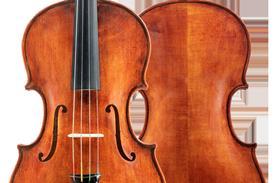- More from navigation items
- Home
- News
- For Subscribers
- Student Hub
- Playing Hub
- Podcast
- Lutherie
- Magazine
- Magazine archive
- Whether you're a player, maker, teacher or enthusiast, you'll find ideas and inspiration from leading artists, teachers and luthiers in our archive which features every issue published since January 2010 - available exclusively to subscribers. View the archive.
- Jobs
- Shop
- Directory
- Contact us
- Subscribe
- Competitions
- Reviews
- Debate
- Artists
- Accessories
Session Report: Symphony of three

For the Sitkovetsky Trio, the challenge of recording Ravel’s Piano Trio was combining three disparate solo voices to sound as one – but the reward was a performance far greater than the sum of its parts, the players tell Tom Stewart
Written two years after his sumptuous ballet Daphnis et Chloé, Ravel’s 1914 Piano Trio is a chamber reimagining of the same saturated soundscapes and exquisite forms. The composer greeted the years that followed the First World War with music of harder-edged economy, but the trio, which features alongside music by Saint-Saëns on the latest disc from the UK-based Sitkovetsky Trio, is anything but. ‘There are only three of us, so the most difficult thing is bringing together all the colours into something that makes sense as a group,’ says pianist Wu Qian. ‘Sometimes you want the sound to be unified and sometimes you want the individual voices to come through. From a technical perspective the music is soloistic, but the challenge is really to reproduce the expression on the page by creating a single idea from our separate parts.’
Ravel’s writing for the piano makes his works some of the most challenging in that instrument’s repertoire, and, as Qian says, the composer’s chamber parts demand a formidable level of skill. It’s hardly surprising that the trio has been recorded by numerous starry combinations of players as a result…
Already subscribed? Please sign in
Subscribe to continue reading…
We’re delighted that you are enjoying our website. For a limited period, you can try an online subscription to The Strad completely free of charge.
* Issues and supplements are available as both print and digital editions. Online subscribers will only receive access to the digital versions.




























